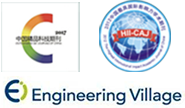Abstract:
Driven by the global goals of "Carbon Peak and Carbon Neutrality", the development of wind energy is experiencing rapid growth worldwide. As the levelized cost of energy continues to decrease, the trend toward larger wind turbines has become a significant direction for industry development. The increasing size of wind turbine blades leads to an exponential increase in their weight and loads, imposing higher demands on the connection performance between blade roots and turbines. This paper discusses the current state and technological trends of root connection systems in wind turbine blade. It systematically analyzes the challenges of embedded blade root connections throughout design, manufacturing, and operation phase. This study analyzes the variations in blade length, load, and weight, as well as their interdependencies, to identify the challenges encountered by root-to-hub connections. It presents a comprehensive analysis of the current state of blade root connection technology from multiple perspectives, including material design, structural design, manufacturing processes, verification analysis and testing validation. Considering the overall development situation of wind turbine blades, this study also projects future trends, offering valuable insights for research on large blade root connection technologies.


 下载:
下载: